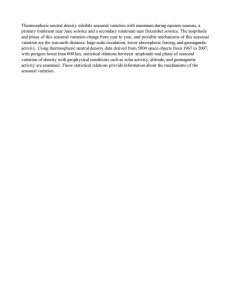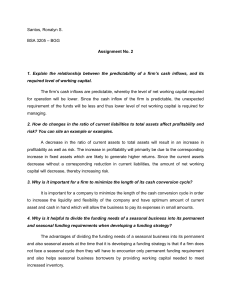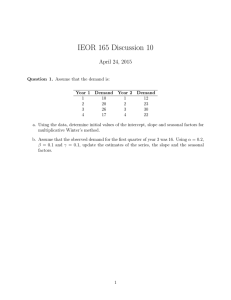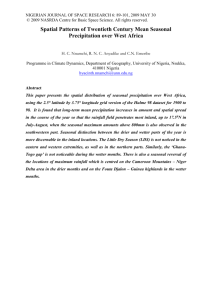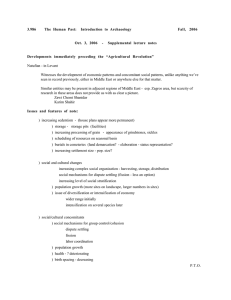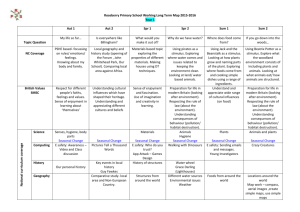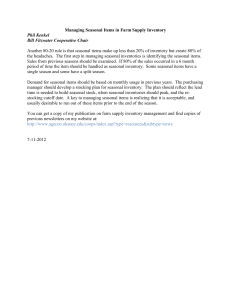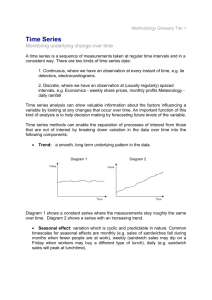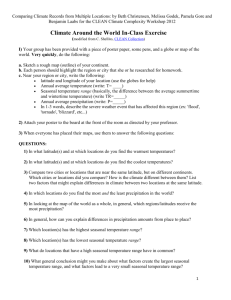1439333055act
advertisement
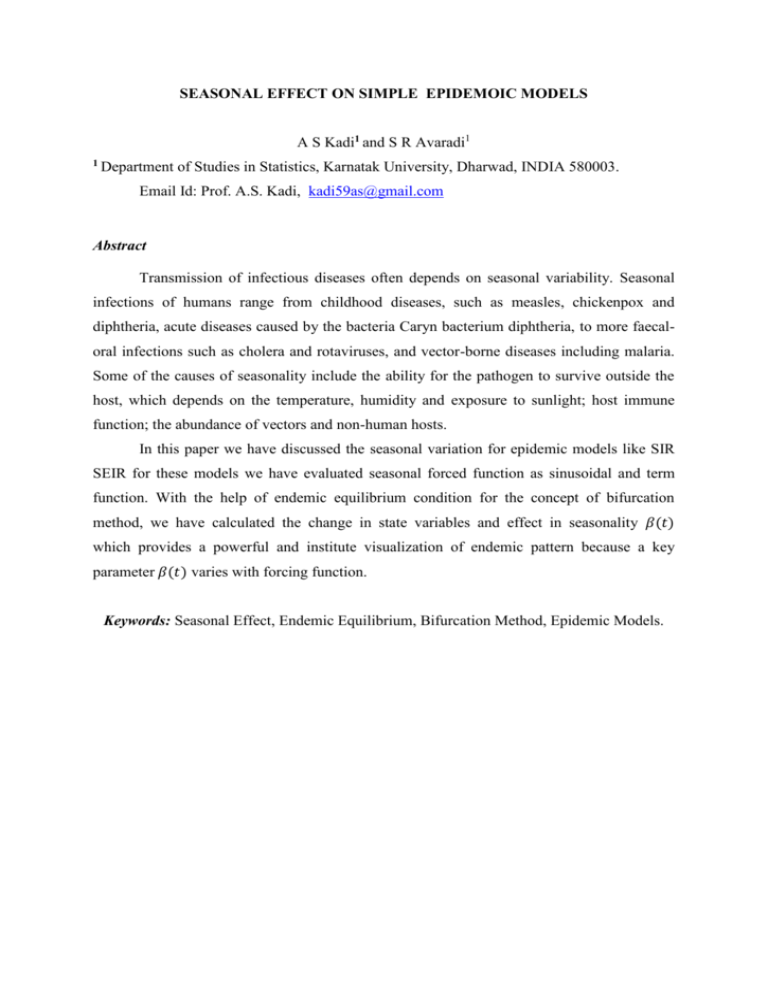
SEASONAL EFFECT ON SIMPLE EPIDEMOIC MODELS A S Kadi1 and S R Avaradi1 1 Department of Studies in Statistics, Karnatak University, Dharwad, INDIA 580003. Email Id: Prof. A.S. Kadi, kadi59as@gmail.com Abstract Transmission of infectious diseases often depends on seasonal variability. Seasonal infections of humans range from childhood diseases, such as measles, chickenpox and diphtheria, acute diseases caused by the bacteria Caryn bacterium diphtheria, to more faecaloral infections such as cholera and rotaviruses, and vector-borne diseases including malaria. Some of the causes of seasonality include the ability for the pathogen to survive outside the host, which depends on the temperature, humidity and exposure to sunlight; host immune function; the abundance of vectors and non-human hosts. In this paper we have discussed the seasonal variation for epidemic models like SIR SEIR for these models we have evaluated seasonal forced function as sinusoidal and term function. With the help of endemic equilibrium condition for the concept of bifurcation method, we have calculated the change in state variables and effect in seasonality 𝛽(𝑡) which provides a powerful and institute visualization of endemic pattern because a key parameter 𝛽(𝑡) varies with forcing function. Keywords: Seasonal Effect, Endemic Equilibrium, Bifurcation Method, Epidemic Models.

